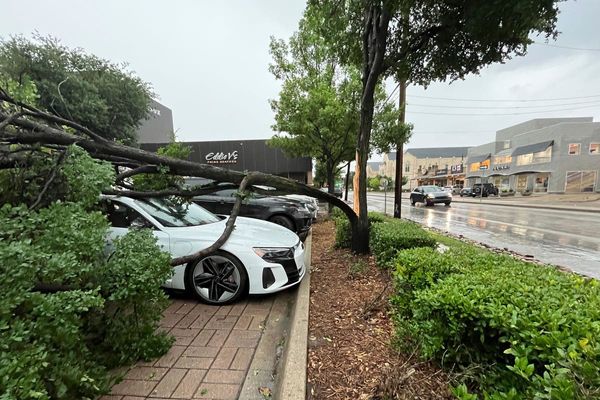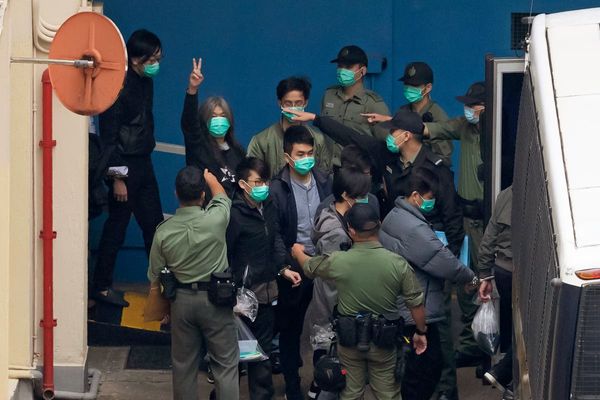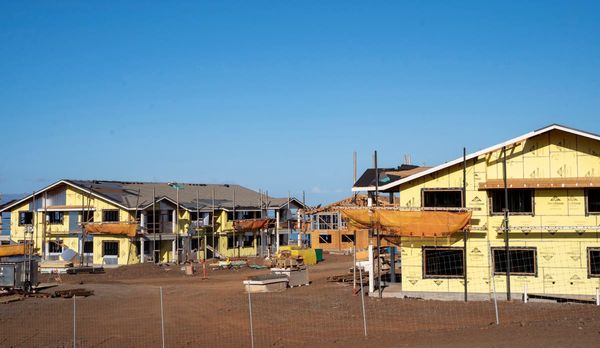
Flying low over the Kayapó Indigenous territory, the poisoning of the Amazon is starkly apparent in a string of mud polygons carved out by illegal goldminers. From a Greenpeace plane, the Indigenous chief Raoni Metuktire Kayapó stares at the scars – tinted red, blue, green, white, brown, yellow and grey – and jabs his finger in anger. “I don’t like this at all. The destruction is so big and the land will never go back to what it was.”
Raoni, a lifetime campaigner for the rainforest, has invited the Brazilian president, Luiz Inácio Lula da Silva, to his territory this week for one of the most important meetings of Indigenous leaders in recent years.
Illegal mining, and its pollution of rivers, people and culture, will be high on the agenda. In the past four years, pressure on Indigenous territories intensified alarmingly under the laissez-faire presidency of Jair Bolsonaro, who encouraged a new wave of invasion by illegal miners, with the Yanomami, Munduruku and Kayapó territories particularly badly affected.

The visible damage caused by deforestation around the Maria Bonita area of Kayapó territory is only a small part of the impact from garimpos (illegal mines). A far bigger and much less understood consequence is the contamination of water systems by toxic separating chemicals and vast quantities of sediment. It is these agents and the algae that forms in the tailings ponds that make the pools change colour at different stages of production or abandonment.
“The garimpos destroy the rivers with mercury. This contaminates the fish that our people eat and then we become contaminated,” said Raoni, who has been campaigning on these issues for most of his life. He became a global figure in the 1980s, immediately recognisable by his labret lip disc, through his advocacy and friendship with celebrity supporters such as Sting, playing an important role in the government’s demarcation of swathes of Indigenous territory in the early 2010s, which is the best-maintained and protected forest in the Amazon.
Raoni walked arm in arm with Lula during the latter’s inaugural procession up to the presidential palace at the start of this year. Since then, the president has appointed Brazil’s first Indigenous minister, called an Amazon summit to be held next month, secured hosting rights for the UN Cop30 climate conference in Belem in November 2025, and sent a clear signal that deforestation and illegal mining will not be tolerated.

These efforts appear to be making progress. In June, the government reported Amazon land clearance had already fallen below pre-Bolsonaro levels, and so far in July, deforestation has dropped by 34% in the first half of 2023. There have also been declines in illegal mining in some parts of the Amazon.
But the government has so far lacked the resources to conduct garimpo-clearing operations in Kayapó land, which has far bigger illegal mines due to the proximity of roads to bring in heavy equipment.
According to Greenpeace figures based on satellite analysis and overflight confirmation, there have been five times more illegal mining alerts in Kayapó land than in Yanomami land so far this year. Despite an improvement compared with last year, there were still 175 new areas opened up in Kayapó land in the last month alone. At least 768km (477 miles) of rivers have so far been affected, mostly in the past decade.
Recent studies have shown that more than a fifth of fish samples taken across the Amazon show levels of mercury in excess of recommendations of the Food and Agriculture Organisation, but there is a dearth of information about the extent to which this has spread to local people.

Greenpeace’s senior campaigner, Danicley de Aguiar, said this should be as important a measurement as deforestation figures. “When people consider the health of the Amazon, all the attention is on hectares that are cleared, but this is only part of the story. We need a new metric for the rivers and people. They are just as important.”
Cultural contamination is another concern. Poy Kayapó, the chief of Gorotire village, which is very close to an illegal mine , says the illegal miners now outnumber his community, which puts pressure on the traditional way of life.
Raoni has now called on representatives from all the Kayapó communities, including those involved with the illegal miners, to discuss a way forward with the Brazilian National Development Bank and the Brazilian Biodiversity Fund.

Despite his advanced age, Raoni is resilient. In a nod to the potential health risks of low oxygen, the small, unpressurised propeller plane cannot fly to high altitudes to escape turbulence so he and the other passengers are bumped around mercilessly on the four-hour flight between the garimpo area and the soy-producing capital of Sinop in Mato Grosso state. Some passengers are sick, but Raoni is unfazed.
What concerns him is what has happened to his land. “Look down there,” he says, pointing to another vast brown strip of cleared land that has been turned into monoculture. “I was born and raised there. It was all forest then. Now it is a soy town. I want Lula to come and see what is going on. I feel very sad to see it all changing and going away. We are losing the strength of the forest.”







